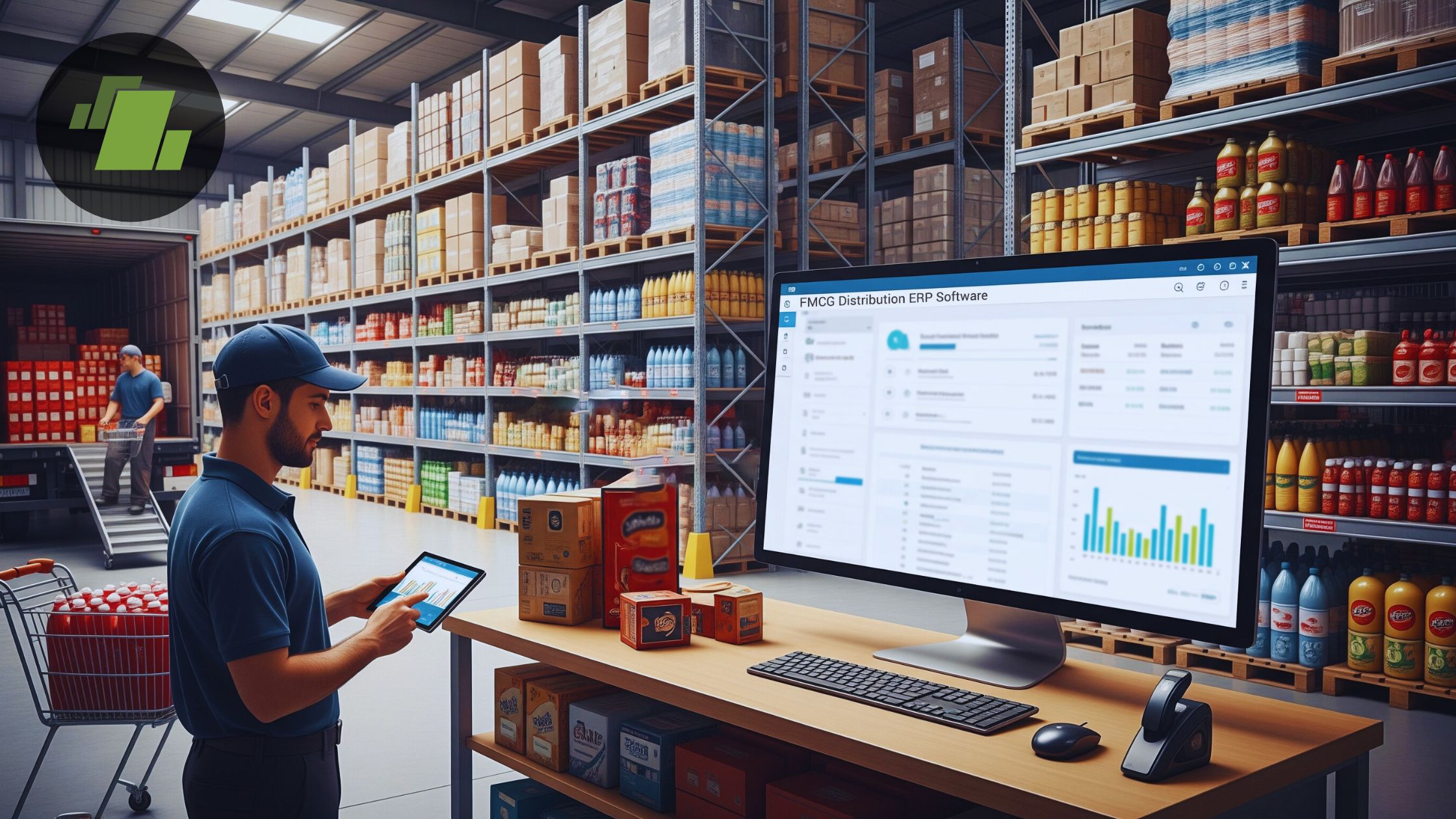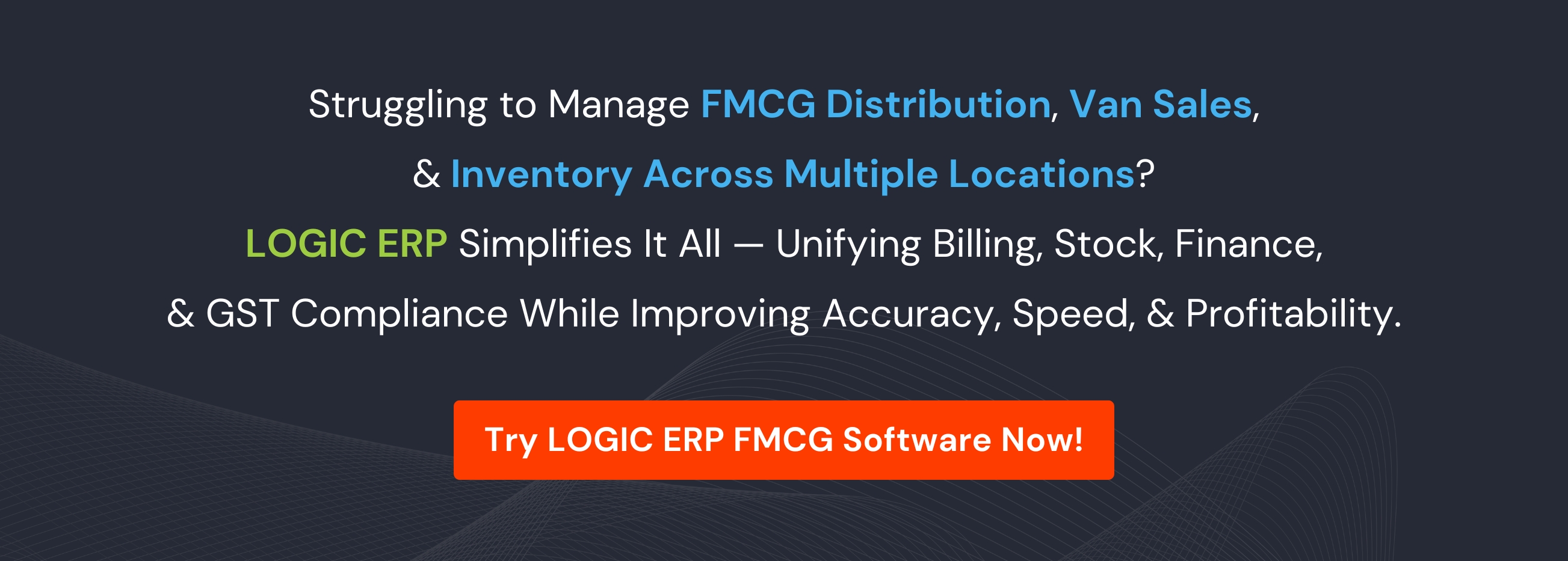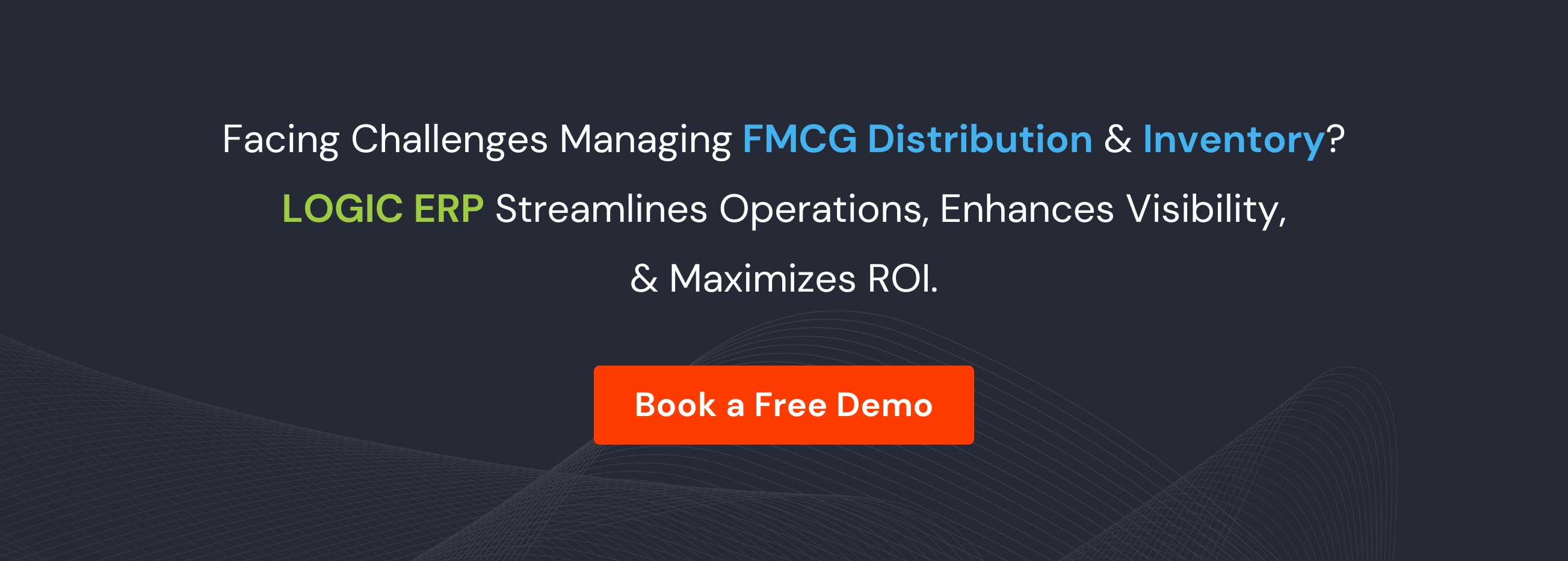

Summary
Discover how FMCG distribution companies can achieve strong ROI through ERP implementation, reduced inventory costs, improved cash flow, higher order accuracy, faster decision-making, and sustainable growth in India and beyond.
Introduction
In the fast-moving world of FMCG (fast moving consumer goods) distribution, efficiency, visibility and agility are no longer optional. With multiple warehouses, van sales, multiple brands, trade schemes, expiry dates, credit terms, GST compliance and dynamic demand, complexity is high. Implementing a modern enterprise resource planning (ERP) system developed for FMCG distribution can deliver significant return on investment (ROI).
This article explains how distribution companies derive value from ERP, what metrics to track, typical payback periods, key cost drivers and best practices, with a focus on Indian and South Asian markets.
Why FMCG Distribution Businesses Need ERP Software
FMCG distribution businesses operate in a fast-paced environment where managing thousands of SKUs, multiple warehouses, van sales, trade promotions, and real-time inventory can become overwhelming. Implementing ERP software for FMCG distribution helps streamline these complex operations by integrating inventory management, sales tracking, billing, finance, and GST compliance into one unified platform.
It enhances real-time visibility, reduces errors, improves stock accuracy, and accelerates order fulfillment, directly impacting profitability. An advanced FMCG ERP system empowers distributors to make data-driven decisions, optimize working capital, and deliver better customer experiences.
High-velocity supply chain and multiple stakeholders
FMCG distribution involves rapid turnover, frequent billing, many SKUs, multiple packaging sizes, expiry-dates, van sales, multiple price lists, trade schemes, and thousands of retailer touchpoints. With legacy systems, FMCG distributors struggle to manage this complexity effectively. ERP provides end-to-end visibility across sales, stock, warehousing, dispatch, returns and finance.
Integration of finance, inventory, sales and compliance
In an FMCG environment, separate silos for goods movement, billing, accounting, credit management and GST compliance create inefficiency. ERP systems unify these functions: inventory tracking, van sales, mobile order booking, e-invoicing/GST, and analytics all on a single platform.
Real-time visibility, forecasting and decision-making
Advanced AI powered ERP solutions deliver dashboards, real-time data, demand forecasting and analytics which enables faster, data-driven decisions: when and how much to replenish, how to allocate sales resources, which distributors are underperforming, and where margin leakages occur.
Key ROI Drivers for ERP in FMCG Distribution
Inventory cost reduction and working capital release
One of the biggest ROI drivers is freeing up working capital tied up in inventory. With better visibility, forecasting, auto-reordering and multi-location stock balancing, FMCG distributors can reduce excess stock, slow-moving SKUs and dead stock. Many distributors report inventory cost reductions of 20-30%, releasing working capital and lowering storage, expiry wastage and obsolescence costs.
Efficiency gains in labour, processes and order-to-cash cycle
ERP automation and process standardisation bring major labour savings and faster cycles. Order accuracy improves, reducing returns, credit notes, and complaints. Administrative overhead drops significantly, and the order-to-cash or financial-close cycle shortens, improving cash flow management and decision-making.
Improved service levels, customer/distributor retention and growth
Better stock availability, on-time dispatch, accurate invoices and mobile order booking lead to higher distributor and retailer satisfaction. A smoother experience boosts retention, strengthens relationships, and drives growth.
Margin enhancement and leak prevention
In FMCG distribution, margins are razor thin; trade schemes, free samples, and returns can erode profitability. ERP systems provide real-time margin visibility, alerts on negative margins, and control over schemes and discounts, reducing margin leaks.
Compliance, risk reduction and scalability
In markets such as India, GST, e-way bills, expiry tracking and traceability are mandatory. An ERP built for FMCG ensures compliance, reducing penalties and audit risk. As a distributor expands geographically, the ERP scales seamlessly, avoiding costly system overhauls later.
Quantifying ROI – Metrics and Payback Periods
Typical ROI ranges and timeline
Mid-market distributors usually achieve ROI payback within 24–36 months, sometimes faster if replacing outdated systems. Annual returns post-implementation often range from 20–50% of the initial investment. Inventory carrying costs can be reduced by up to 30%.
Key metrics to track
- Inventory turnover (reduce Days-Sales-Outstanding inventory)
- Percentage of slow-moving or expired stock
- Order accuracy (percentage of error-free shipments)
- Order-to-cash cycle time
- Administrative cost per invoice
- Margin leakage (negative margin transactions)
- Distributor satisfaction and retention rate
Example ROI calculation
Suppose a distributor has ₹10 crore tied in inventory and invests ₹1 crore in ERP implementation. If ERP reduces inventory by 20%, ₹2 crore is released as working capital. At a 10% annual cost of capital, that’s ₹20 lakh saved, plus labour and process savings can push annual benefits to ₹40–50 lakh. Within 2–3 years, the investment is recovered, and long-term ROI continues to grow.
Indian and South Asian FMCG Distribution – Unique Considerations
Multi-location, van-sales and secondary sales tracking
Indian distributors often manage van-sales, rural routes and secondary sales. ERP systems built for FMCG support mobile order booking, beat-planning, van stock tracking and secondary-sales capture.
GST, e-way bills, MRP variations and expiry management
Indian regulations require GST returns, e-way bills, batch-wise MRP control and expiry management. ERP systems for FMCG integrate these compliance requirements natively.
High SKU count and fragmented retail
India’s FMCG market involves thousands of outlets, frequent promotions and numerous SKUs. ERP systems manage schemes, discounts, free items, area-wise pricing and multi-unit conversions efficiently.
Scalability for regional expansion
As distribution networks expand across regions, ERP systems support multiple warehouses, companies, and mobile access even in low-connectivity environments.
Implementation Best Practices to Maximise ROI
Clean data migration and preparation
ERP success depends on data quality. Ensure item masters, pricing, stock, customer and credit data are cleaned before migration to prevent inaccuracies.
Change management, training and process redesign
ERP impacts workflows and culture. Train users thoroughly, redesign outdated processes, and encourage adoption through involvement and communication.
Phased rollout for quick wins
Start with high-impact modules | inventory, mobile order booking, or scheme management to deliver early success and build confidence before full rollout.
KPI tracking and continuous improvement
Define ROI metrics before go-live, monitor them monthly, and leverage ERP analytics to identify slow-moving SKUs, order delays, or margin leaks.
Choose a solution built for FMCG distribution
Select an ERP designed for FMCG distribution, offering features like van-sales management, trade schemes, batch tracking, mobile sales and multi-warehouse integration.
Common Pitfalls and How to Avoid Them
Over-customisation and delayed implementation
Too much customisation increases cost and complexity. Stick to proven workflows and customize only where it creates competitive advantage.
Ignoring data quality
Poor data migration leads to inaccurate reports and weak adoption. Clean and standardise data before migration.
Lack of user adoption
ERP success depends on users. Involve all departments early, provide training and monitor system usage regularly.
Underestimating total cost of ownership
Account for software, hardware, consulting, training and maintenance costs when calculating ROI.
No continuous improvement
Treat ERP as an ongoing process. Regularly use insights and analytics to refine operations and improve ROI.
Conclusion – Realising ROI with ERP in FMCG Distribution
For FMCG distributors, whether in Gurugram, NCR, or any emerging market, a well-implemented ERP system can transform operations. It reduces inventory costs, improves margins, accelerates cash flow, and ensures compliance. ROI typically materialises within 2–3 years, followed by sustained profitability and scalability.
With the right ERP solution and commitment, the ROI of ERP moves from theory to measurable, lasting value.
Call at +91-73411-41176 or send us an email at sales@logicerp.com to book a free demo for the best FMCG distribution ERP software for business management today!
Frequently Asked Questions (FAQs)
Q1. How soon can we expect payback from an ERP implementation?
Most FMCG distributors experience ROI payback within 24–36 months after implementation.
Q2. Which ROI metric matters most for FMCG distributors?
Inventory reduction and improved order-to-cash cycle time are key ROI drivers.
Q3. Is a generic ERP suitable for FMCG distribution?
No. Choose an ERP tailored for FMCG distribution with features like van sales, batch tracking, scheme management, and mobile integration.
Q4. What are the risks of ERP implementation?
Common risks include underestimating effort, poor data quality, low adoption and lack of continuous improvement.
Q5. How does ERP ensure regulatory compliance?
FMCG ERPs include GST and e-way bill integration, batch-wise MRP tracking, expiry management and reporting, helping maintain compliance with Indian regulations.





